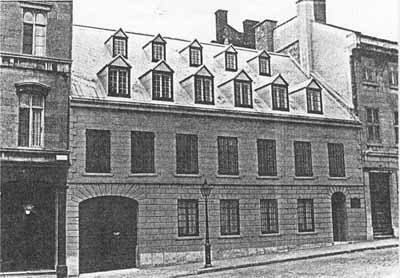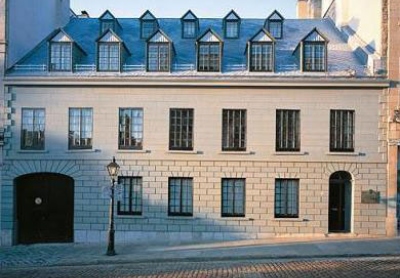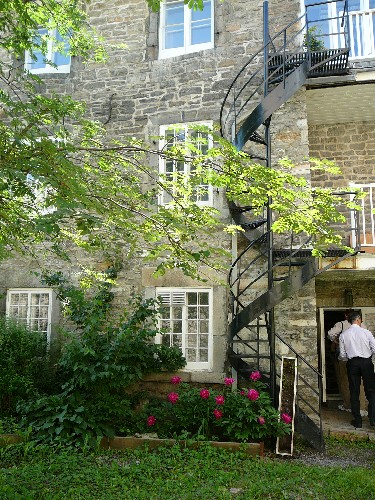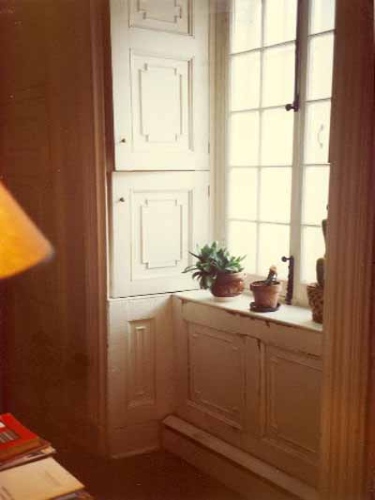Louis-Joseph Papineau National Historic Site
Papineau House was designated a national historic site in November 1968.
Commemorative plaque: 440 Bonsecours Street, Montréal, Quebec
Built in 1785, this stone house has the rectangular shape and gable roof typical of contemporary urban architecture in Quebec. Between 1814 and 1871 the house belonged to Louis-Joseph Papineau, who lived here at irregular intervals. During the 1830s, Papineau made a number of changes to the house in keeping with the Neoclassic style then in vogue, including covering the facade with wood panelling in imitation of cut stone. A lawyer and politician, Papineau (1786-1871) was the leader of the parti canadien and a principal figure in the events of 1837.
Louis-Joseph Papineau National Historic Site
This stone house, built in 1785, was the home of Louis-Joseph Papineau (1786-1871) during the most active and important period of his life: when he was Speaker of the House of Assembly of Lower Canada and then leader of the Parti canadien, which became the Parti patriote. The house features an amalgamation of several architectural styles, merging French and English influences. Papineau acquired this French Regime residence in 1814, enlarged it in 1831-32, and added a neoclassical façade of wood cladding, fashioned to simulate cut stone.
Joseph Papineau, the father of Louis-Joseph Papineau, originally purchased the house in 1809, and then Louis-Joseph acquired it from his father five years later. Louis-Joseph altered the residence by adding a brick extension with a passageway and a porte cochère, and then positioned the entrance to the home off-centre in the style of houses in London. Wooden wainscoting made to look like cut stone was affixed to the façade in order to conceal the different materials (foundation stone, stone cladding, bricks) and the foundation which had been partly exposed because of the lowering of Bonsecours Street after the demolition of the Citadel.
As a leader of the Parti patriote and a defender of republicanism in Lower Canada, Papineau became the guiding force of a vast movement of popular protest in the 1830s. As tensions mounted in the years leading up to the 1837 uprising, the Bonsecours Street house was the setting for numerous political demonstrations. On several occasions between 1834 and 1837, it was attacked and damaged. The Patriotes accused the British troops of parading in front of the house in a political manner on St. George’s Day in 1835. The house was also the scene of armed military organizing by the Patriotes from 7 November to 13 November 1837, the day Papineau left the house for the countryside. At the end of November, when the defeat of the Patriotes was imminent, Papineau fled to the United States and then sailed to France in 1839.
Granted amnesty in 1844, Papineau came back to Lower Canada 1845. Upon his return from exile, Papineau continued to live in his Montréal house until the completion of “Monte-Bello,” his seigneurial manor in 1850. The house was then passed on from generation to generation in the Papineau family until 1920.
Backgrounder last update: 2021-09-22
The National Program of Historical Commemoration relies on the participation of Canadians in the identification of places, events and persons of national historic significance. Any member of the public can nominate a topic for consideration by the Historic Sites and Monuments Board of Canada.
- Date modified :




